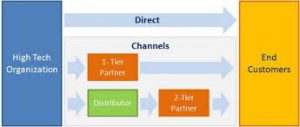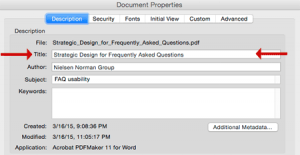— July 12, 2019
It’s easy for marketers to get sucked into shiny object syndrome. We’re tasked with generating real business results and with so many companies vying for buyer attention, it’s tougher than ever to break through. That’s why there’s such a strong push to embrace content marketing, deliver innovative self-serve digital channels, leverage live chat, improve social media engagement, take advantage of video, and more.
In this world of digital marketing, it’s easy to brush off traditional channels and tactics as either old-fashioned or outdated.
But when it comes to B2B marketing, you know there’s often no substitute for in-person communications. Studies show that close rates for in-person meetings hover around 40% and that in-person requests are 34x more successful than those made over email.
That’s why product demos can be so effective for field marketers. But you still have to find ways to stand out against the competition. If you want to deliver the kind of product demo that can boost sales by upwards of 475%, you need these four keys to success.
1. Personalize the Experience
Field marketers often fall into the same trap with their product demos that all other areas of marketing struggle with—focusing too much on the product.
When you’re meeting a prospect in person to run a product demo, you want to tailor the presentation to their specific needs. That means having a firm grasp on where they stand in the buyer’s journey, how their unique role would benefit from your product, and which concerns might keep them from making a purchase decision.
All too often, field marketers have a nearly-scripted product demo that they deliver to every prospect. You might move a few prospects further down the funnel—but you’ll see far more success if you can personalize the experience.
2. Build Relationships with Prospects
This is along the same lines of personalizing the product demo experience. But beyond the actual product demo, your goal should be to use in-person meetings to build relationships with your prospects.
If they’re in the market for a new solution, it’s unlikely you’re the only field marketer or salesperson they’ll be meeting with. While your product might speak for itself from a feature perspective, it’s your job to do the emotional work of building a relationship that keeps your brand top-of-mind when it comes time to make a purchase decision.
Building relationships with prospects is all about connecting with them at every level of the buyer’s journey. If you’re a field marketer running a product demo, you need to understand the prospect’s behavior in the earliest stages of research as well as any interactions they may have had with competitors. Then, you also have to understand the context of their business, seeing the challenges they face both today and as their companies evolve.
When you see the bigger picture and can weave a roadmap to success into your product demo, prospects will be more likely to trust you and buy into your product demo.
3. Bridge the Gap with Sales
Field marketers sit in the middle ground between top-of-funnel marketers and the sales teams focused on closing deals. While you’re out in the field interacting with prospects the way a salesperson might, there’s a chance you still don’t quite gel with sales.
Marketers and sales are often speaking different languages, leading to frustration that could hurt conversion rates. For field marketers to bridge the gap with sales, your focus needs to be on how you’ll make the handoff to sales.
This means having a real strategy for moving the sale forward from the product demo. You can’t end the demo without making a specific ask that perfectly matches the needs of an individual prospect. And to do that, you need to know where prospects stand in terms of purchase intent even before you schedule the meeting.
Intent Data Is the Foundation for Product Demo Success
If you look closely at all three of these keys to product demo success, they all come down to one thing—doing your homework. The more you know about your prospects going into the product demo, the easier it will be to give a presentation that engages and sparks action.
But the information necessary to ace your product demo isn’t always readily available in your own organization. That’s where third-party intent data comes into play.
When you find the right intent data partner, you’ll gain access to all kinds of information about prospect behavior—from the content they engaged with during the research stage to the ways they’ve interacted with your competitors and how likely they are to actually make a purchase.
The challenge is finding ways to make the most of your intent data. If you want to learn more about what intent data can do for your marketing (both in the field and elsewhere), download our free report, Demystifying B2B Purchase Intent Data.
Business & Finance Articles on Business 2 Community
(12)






